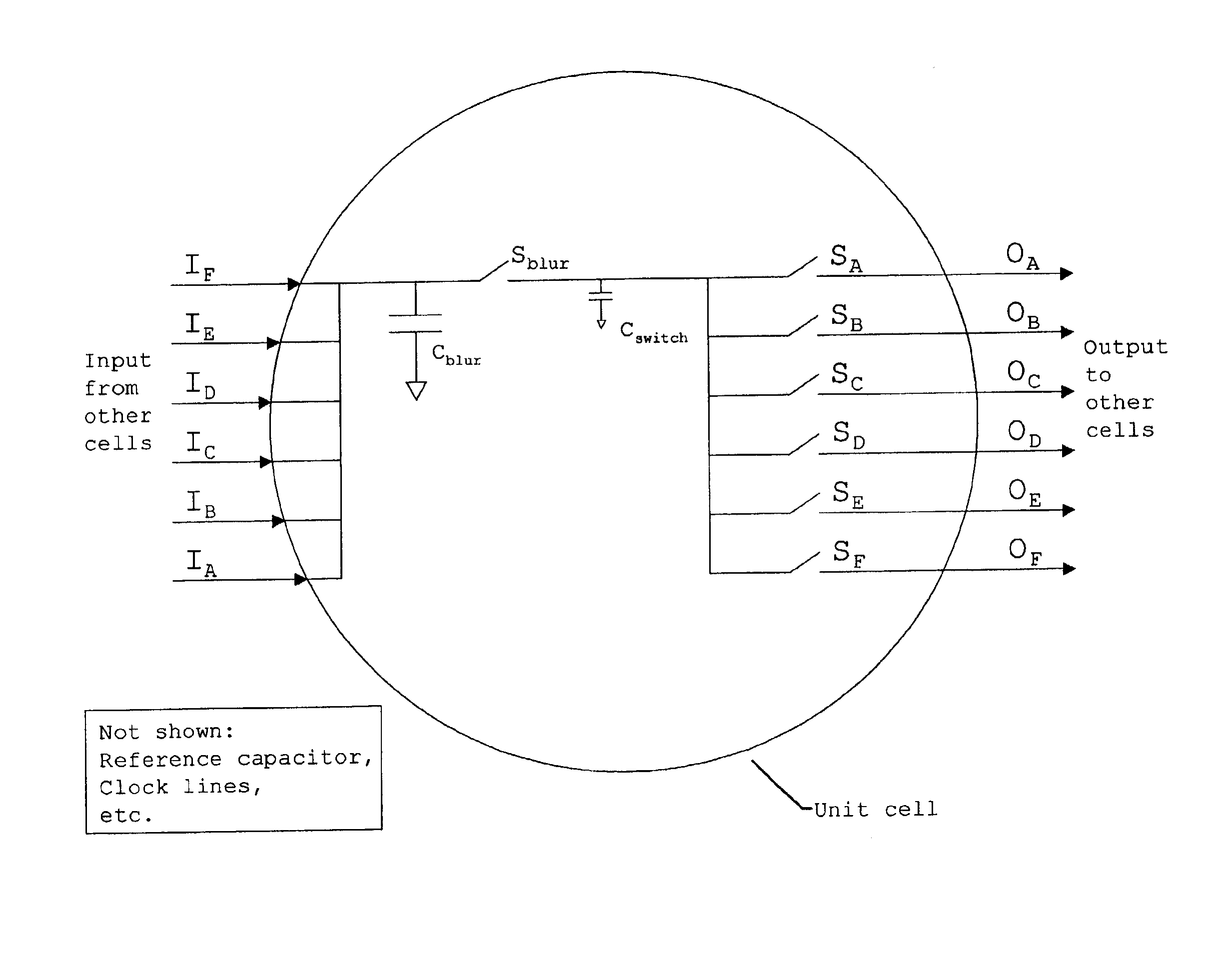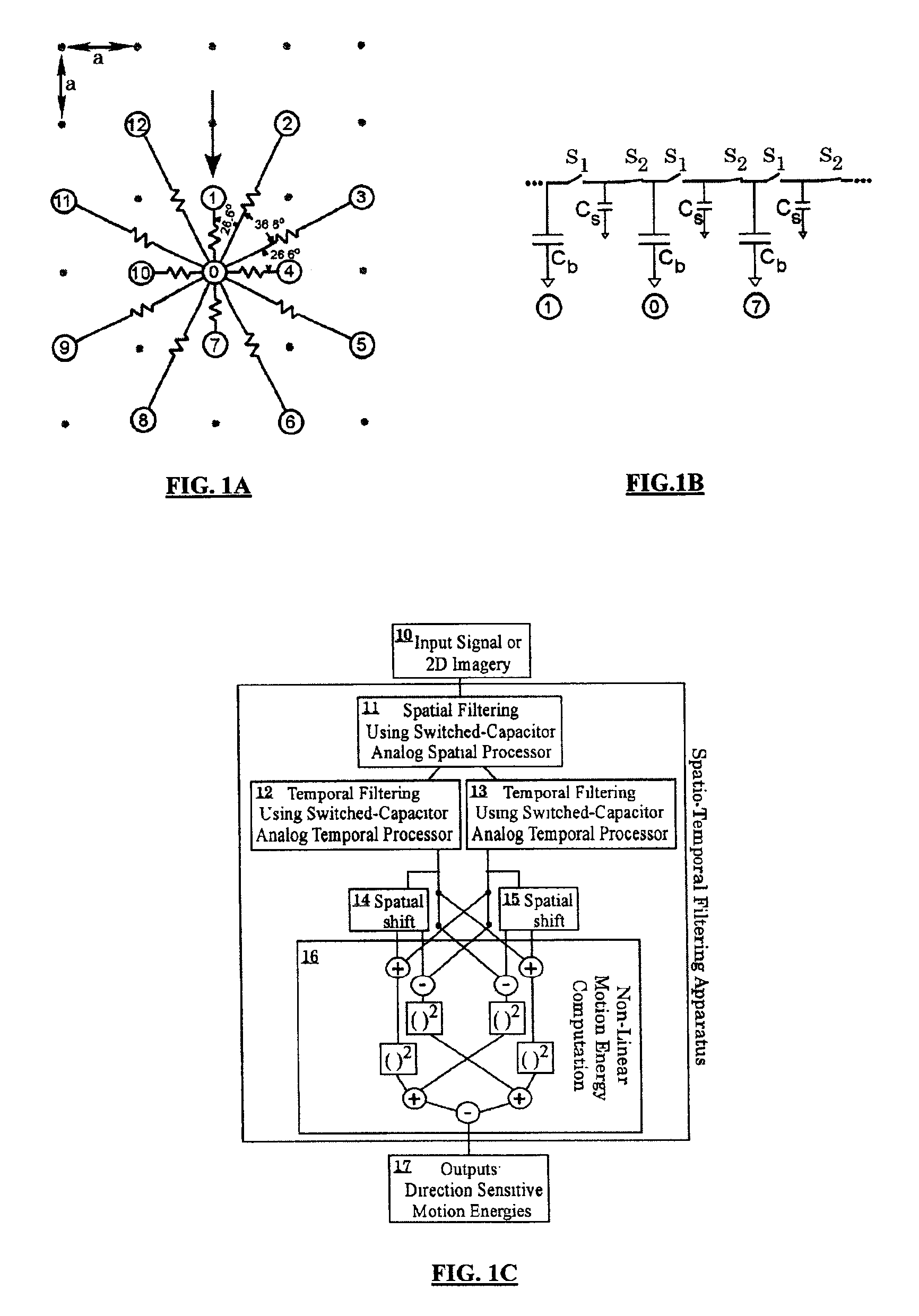Spatio-temporal filter and method
a spatial-temporal filter and filtering technology, applied in the field ofsignal and image processing systems, can solve the problems of large computational rates, slow response time, and prohibitive net power dissipation of large staring arrays, and achieve the effect of eliminating complex polymer device processing
- Summary
- Abstract
- Description
- Claims
- Application Information
AI Technical Summary
Benefits of technology
Problems solved by technology
Method used
Image
Examples
examples
[0100]For a cruise missile or aircraft moving with respect to an earth background and viewed by an imaging seeker on an interceptor, both the background and the cruise missile target will exhibit relative motion with respect to the interceptor. However, the earth background will have motion determined by the interceptor's trajectory and the target will have a relative motion (different than the background) determined by the relative velocity between the interceptor and the target. In addition, most of the resolved feature sizes of the background will not have the same spatial extent and / or 2D aspect ratio as the target. Thus, 2D spatial frequency filtering of a scene to extract only those features which are comparable in size and shape to the target, followed (or preceded) by temporal filtering of a series of scenes and extracting the features which have a prescribed relative motion through the motion-energy computation acting on the filtered data, provides ...
PUM
 Login to View More
Login to View More Abstract
Description
Claims
Application Information
 Login to View More
Login to View More - R&D
- Intellectual Property
- Life Sciences
- Materials
- Tech Scout
- Unparalleled Data Quality
- Higher Quality Content
- 60% Fewer Hallucinations
Browse by: Latest US Patents, China's latest patents, Technical Efficacy Thesaurus, Application Domain, Technology Topic, Popular Technical Reports.
© 2025 PatSnap. All rights reserved.Legal|Privacy policy|Modern Slavery Act Transparency Statement|Sitemap|About US| Contact US: help@patsnap.com



